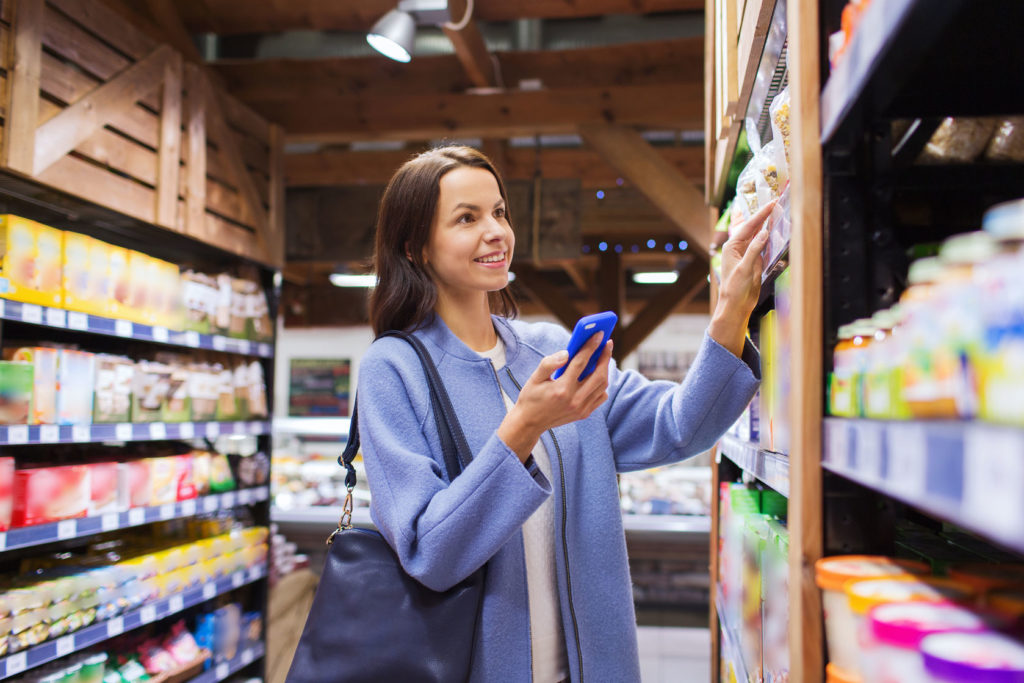The Grocery Manufacturers Association (GMA) and the Food Marketing Institute (FMI) launched a new marketing campaign to promote the SmartLabel program according to a release. SmartLabel enables consumers to get deeper insights into food items by simply scanning product QR codes with their phones.
According to an Atomik Research survey highlighted in the release, over 70 percent of consumers want more detail about the food products they purchase than what is currently available on product labels. Besides the ingredients list and nutritional breakdown, shoppers want to know about the benefits of ingredients, production practices associated with a product and if the product has any allergens. The marketing release also reveals that 75 percent of shoppers are willing to change their grocery buying habits if they had more information on manufacturing practices, environmental impact, safety and usage. About 59 percent of shoppers claim that it is important for them to have information on allergens. In addition, sustainability practices were found to be a driver in product sales as well with nearly two-thirds of consumers claiming that they are interested in ethical and sustainable sourcing and 60 percent were interested in the type of energy used to produce products (solar or wind power).
However, all this information would clutter product labels and reduce the aesthetic appeal of their packaging, which is why the GMA and FMI are encouraging food companies to register their products with the SmartLabel program. Consumers can utilize SmartLabel by simply scanning the QR codes of food products with the SmartLabel app, using their smartphone cameras, visiting www.smartlabel.org, going to a SmartLabel product’s online landing page or calling a product’s 1-800 phone number to get information over the phone. By using the SmartLabel program, shoppers can have access to detailed information on allergens, why the ingredients in a product were used, information on how a product was produced, how animals were treated during the manufacturing process, the product’s environmental impact and usage instructions.
Currently, there are 28,000 food, beverage, personal care and household product brands enrolled under the SmartLabel program, according to Jim Flannery, Senior Executive Vice President at the GMA.
“More products are using SmartLabel every week, and that’s why manufacturers and retailers are kicking off a campaign to make sure consumers know about SmartLabel and how it helps them get the additional information they want about the products they use and consume,” said Flannery.
“Consumers see retailers as a trusted source of information about the products they buy, and this education campaign aims to show consumers how they can use QR codes and other digital disclosure methods to seek a closer connection to the foods they eat and the products they apply,” said Mark Baum, Chief Collaboration Officer and Senior Vice President for Industry Relations at the Food Marketing Institute.
In addition to promotional videos, infographics and press releases, the two organizations have also launched a Twitter campaign with the hashtag #GoBeyondTheLabel and Twitter handle @smartlabelinfo.
With transparency quickly becoming a top concern for consumers in the food space, food manufacturers can gain consumer trust by incorporating this new SmartLabel program. Although this might mean that food companies will have to invest in more sustainable practices and reduce their use of artificial ingredients. However, manufacturers shouldn’t be dissuaded by this because consumers have been found to be willing to pay extra for sustainable and premium food options.












Join or login to leave a comment
JOIN LOGIN